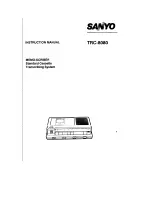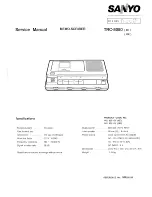
101
Addi
tion
al
I
n
fo
rm
at
io
n
i.LINK is a more familiar term for IEEE 1394
data transport bus proposed by SONY, and is
a trademark approved by many corporations.
IEEE 1394 is an international standard
standardized by the Institute of Electrical and
Electronics Engineers.
i.LINK’s maximum baud rate varies
according to the equipment. Three maximum
baud rates are defined:
S100 (approx. 100 Mbps*)
S200 (approx. 200 Mbps)
S400 (approx. 400 Mbps)
The baud rate is listed under “Specifications”
in the instruction manual of each equipment.
It is also indicated near the i.LINK jack on
some equipment.
The maximum baud rate of equipment on
which it is not indicated such as this unit is
“S100.”
When units are connected to equipment
having a different maximum baud rate, the
baud rate sometimes differs from the
indicated baud rate.
* What is Mbps?
Mbps stands for megabits per second, or the
amount of data that can be sent or received in one
second. For example, a baud rate of 100 Mbps
means that 100 megabits of data can be sent in
one second.
For details on how to dub when this recorder
is connected to other video equipment having
DV jacks, see page 72.
The DV jack on this recorder can only input
DVC-SD signals. It cannot output signals.
The DV jack will not accept MICRO MV
signals from equipment such as a MICRO
MV digital video camera with an i.LINK
jack.
For further precautions, see the notes on
page 72.
For details on precautions when connecting
this recorder, also see the instruction manuals
for the equipment to be connected.
Use the Sony i.LINK 4-pin-to-4-pin cable
(during DV dubbing).
i.LINK and are trademarks.
About the name “i.LINK”
i.LINK baud rate
i.LINK functions on this
recorder
Required i.LINK cable








































